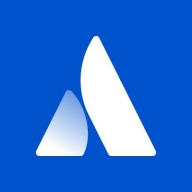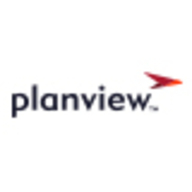

Jira and Planview AgilePlace are competitors in the agile project management sector. Based on user feedback, Planview AgilePlace showcases standout features, although Jira offers attractive pricing and support.
Features: Jira offers powerful issue tracking and numerous integrations, making it adaptable for various project needs. Its customizable workflows and agile support include tools for sprint and progress tracking. Planview AgilePlace, renowned for its visual project management strengths, features dynamic Kanban boards and streamlined workflows, promoting effective team collaboration and high visibility of project progress.
Room for Improvement: Jira could enhance personalization by improving its customer service experience to be more personable. Simplification in configuration and deployment processes might also be beneficial. Planview AgilePlace could expand its integration options to rival Jira’s extensive marketplace. Users also suggest improving initial setup cost strategies to make the platform more accessible to a broader range of organizations.
Ease of Deployment and Customer Service: Jira provides a cloud-based deployment model with scalability options and efficient yet somewhat impersonal customer service. Planview AgilePlace offers straightforward deployment focused on personalized support and training, enhancing user onboarding and satisfaction.
Pricing and ROI: Jira stands out with its cost-effective initial setup and flexible pricing tiers suited to different organization sizes, providing good ROI for those needing tool customization. In contrast, Planview AgilePlace, while potentially higher in initial cost, delivers significant ROI for agile-focused organizations with features enhancing team productivity and project visibility.

Jira is a powerful cloud- and subscription-based application lifecycle and issue management solution. It is designed to aid users both in project management and in resolving any issues that arise at any point in the software development process. It is especially concerned with easing the ability of developers to collaborate.
Jira Benefits
Some of the ways that organizations can benefit by choosing to deploy Jira include:
Jira Features
Real-time notification feature. Users can set Jira so that it offers them notifications that contain critical information in real time. It can send users email notifications when pressing issues have been updated. They can also set it to notify them about tasks that may be due, or other similar events.
Reviews from Real Users
Jira is a powerful solution that stands out when compared to many of its competitors. Two major advantages it offers are its workflow engine and its highly customizable dashboard.
Bharath R., the tool implementation and project management lead at a financial services firm, writes, “I feel the strongest feature of Jira is its workflow engine. It empowers us to automate our workflows within our organization. It's the one characteristic of Jira which I think can help any organization, be it in any domain.”
Uday J., a staff engineer at a computer company, says, “Another thing that I like a lot about Jira is that in the dashboard, you can plug the modules that you want. You can enable certain sections. For example, you can show trend history, open Jira tickets, etc. Some of the managers have created a dashboard for each engineer.”
Planview AgilePlace is a cloud-based solution designed to provide businesses with a continuous flow of work to help teams accelerate delivery times by visualizing their work with enterprise Kanban boards and lean metrics. Planview offers project managers the visibility, resource management, and real-time analytics necessary to help their teams reduce bottlenecks and dependencies and work more effectively. By using Kanban boards, teams are able to visually track and manage the flow of their work from the strategy level, through implementation up to end-product delivery.
Planview AgilePlace Benefits
Planview helps teams to smoothly implement their strategies by offering its users the following benefits:
Reviews from Real Users
Planview AgilePlace stands out among its competitors for a number of reasons. Several major ones are its user-friendly management pane, the visibility that it provides for its users, and its agile management capabilities.
A manufacturing manager at a large manufacturing company writes, “Using the tool seems to save time versus trying to do things in a regular manner. It is highly collaborative; everybody can see things in one place. It is a highly functional, but pretty simple tool. That is hard to find: A tool that has a lot of functions, but is also simple.”
We monitor all Application Lifecycle Management (ALM) Suites reviews to prevent fraudulent reviews and keep review quality high. We do not post reviews by company employees or direct competitors. We validate each review for authenticity via cross-reference with LinkedIn, and personal follow-up with the reviewer when necessary.